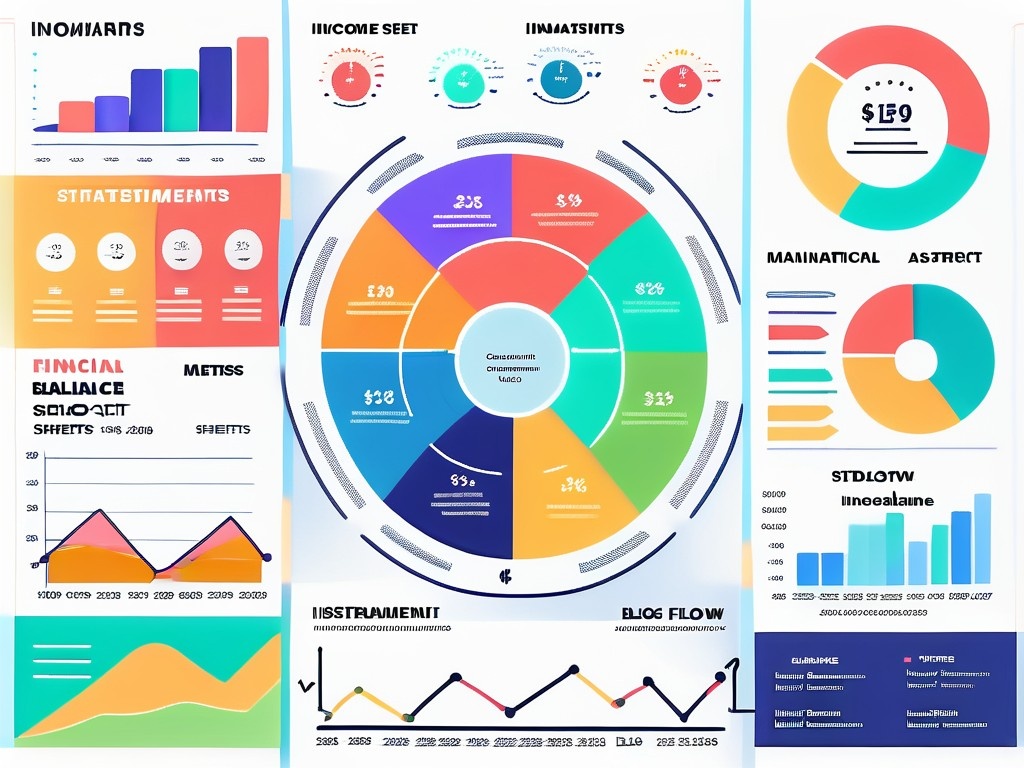Effective financial management is crucial for the sustainability and growth of childcare centers. Quarterly financial reporting serves as a vital tool that not only organizes financial data but also provides insights into performance and future planning. In this article, we will explore the importance of quarterly financial reporting, its components, best practices, and how to interpret these reports for strategic planning.
Understanding the Importance of Quarterly Financial Reporting
Quarterly financial reporting holds significant importance for childcare centers. These reports offer a snapshot of a center’s financial health, enabling stakeholders to make informed decisions. By systematically reviewing financial data every three months, center directors can identify trends, allocate resources effectively, and adjust strategies accordingly.

The Role of Financial Reporting in Childcare Centers
Financial reporting plays a multifaceted role within childcare centers. It helps in creating transparency and accountability among staff and stakeholders. By sharing financial reports, centers can keep parents, investors, and regulatory bodies informed about their economic standing. This transparency can foster trust and increase community support.
Moreover, financial reporting is integral in ensuring compliance with licensing and funding requirements. Many state agencies require childcare centers to provide detailed financial information as part of their operational oversight. Regularly updated financial reports help centers meet these obligations efficiently. Additionally, these reports can serve as a valuable tool for securing grants or funding from government and private entities, as they demonstrate a center’s financial responsibility and operational viability.
Schedule a free 30-minutes session with us!
Key Benefits of Regular Financial Analysis
Engaging in regular financial analysis affords numerous benefits for childcare centers. Firstly, it allows for prompt identification of potential financial issues before they escalate. For instance, if a center notices declining revenue over two consecutive quarters, it can quickly act to explore the reasons behind the drop and implement corrective measures.
Secondly, periodic financial analyses can enhance operational efficiency. By understanding where funds are being allocated, centers can discern areas of wastage or underutilization, allowing for more strategic resource distribution. Ultimately, these insights lead to better decision-making and improved financial health. Furthermore, regular financial analysis can also empower staff by involving them in budget discussions and financial planning, fostering a culture of financial literacy and responsibility within the organization. This engagement not only boosts morale but also aligns the team’s efforts with the center’s financial goals, creating a more cohesive working environment.
Components of a Comprehensive Financial Report
A comprehensive financial report comprises various essential components that together provide a clear picture of a center’s financial position. Understanding these components is crucial for producing meaningful financial analyses.

Revenue Analysis
Revenue analysis involves the examination of incoming funds, which typically include fees from parents, government subsidies, and grants. A detailed revenue analysis helps childcare centers track their income against projected budgets, assess funding sources, and understand seasonal fluctuations in enrollment ratios.
Additionally, revenue analysis can uncover opportunities for growth. For example, centers might discover a demand for additional services, such as extended care hours or enrichment programs, based on enrollment trends and parent feedback. By actively soliciting input from families, centers can tailor their offerings to better meet community needs, potentially increasing both enrollment and revenue streams.
Expense Tracking
Expense tracking is equally important as revenue analysis. It encompasses all operational costs, including staff salaries, utilities, materials, and maintenance. Understanding these expenses allows centers to manage their budgets effectively, ensuring that they are not overspending in any particular area.
Moreover, expense tracking enables centers to forecast future spending, informed by trends and historical data. By anticipating costs, childcare centers can create budgets that align with their strategic goals and financial capabilities. Furthermore, centers can identify areas where cost-saving measures could be implemented, such as negotiating better rates with suppliers or optimizing staff schedules to reduce overtime, ultimately enhancing their financial health.
Profit and Loss Statement
The profit and loss (P&L) statement is a critical component of financial reporting. This statement provides a summary of revenues, costs, and expenses incurred during a specific period. By analyzing the P&L statement, childcare centers can determine their profitability and assess operational efficiency.
A well-prepared P&L statement can also serve a communicative purpose. Sharing this document with stakeholders can help illustrate financial outcomes and provide context for financial decisions made within the organization. Additionally, it can be a valuable tool for attracting potential investors or securing grants, as it demonstrates the center’s financial viability and commitment to transparency. Regularly reviewing the P&L statement can also help identify trends over time, allowing centers to make informed adjustments to their operations and strategies to enhance sustainability and growth.
Schedule a free 30-minutes session with us!
Best Practices for Creating Quarterly Financial Reports
Creating effective quarterly financial reports requires careful planning and execution. By following best practices, childcare centers can enhance the quality and impact of their reports.

Setting Financial Goals
One of the first steps in preparing financial reports is to establish clear financial goals. These goals should be specific, measurable, achievable, relevant, and time-bound (SMART). By setting these targets, childcare centers create a framework for evaluating their financial performance.
Financial goals can include metrics such as increasing enrollment by a certain percentage, reducing operational costs by a specific amount, or maintaining a specific ratio of expenses to revenue. These benchmarks help create focus and direction for financial reporting. Additionally, it is beneficial to involve key stakeholders, such as staff and board members, in the goal-setting process. This collaborative approach not only fosters a sense of ownership but also ensures that the goals are aligned with the overall mission and vision of the childcare center.
Regular Monitoring and Adjustments
Regularly monitoring financial performance against established goals is essential. This practice allows childcare centers to make timely adjustments and stay aligned with their strategic objectives. Continuous evaluation helps in identifying variance from expectations and facilitates proactive measures to rectify any discrepancies.
Moreover, regular monitoring reinforces a culture of accountability within the organization, prompting staff to stay aware of financial realities and contribute to meeting collective goals. It can also be advantageous to schedule periodic reviews, such as monthly or bi-monthly check-ins, to assess progress and discuss any emerging challenges. This ongoing dialogue can lead to innovative solutions and foster a more agile approach to financial management.
Utilizing Financial Reporting Tools
In an increasingly digital world, leveraging financial reporting tools can streamline the reporting process. Software solutions can automate data entry, generate reports, and provide visualizations that facilitate understanding. These tools can simplify comparisons and analyses, freeing up time for childcare administrators to focus on strategic planning rather than just data management.
Choosing the right financial reporting tools depends on the unique needs of each center. Customizable software allows for adaptability as financial situations and organizational goals evolve, ensuring ongoing relevance and effectiveness. Furthermore, training staff to effectively use these tools is crucial. Providing comprehensive training sessions can empower employees to utilize the software to its fullest potential, leading to more accurate reporting and informed decision-making. Additionally, integrating these tools with other management systems, such as enrollment or billing software, can create a cohesive ecosystem that enhances overall operational efficiency.
Interpreting Financial Reports for Strategic Planning
Interpreting financial reports goes beyond merely reviewing numbers. It requires context, analysis, and strategy. By understanding how to interpret their financial reports, childcare centers can utilize this information for effective strategic planning.
Identifying Financial Trends
Identifying financial trends is a crucial step in interpreting financial reports. By examining patterns over time, centers can gain insights into enrollment trends, seasonal revenue changes, and shifting expenses. This analysis enables them to make informed predictions about future performance and adapt their strategic outlook accordingly.
For instance, if a center observes that enrollment tends to decline during certain months, they could consider marketing efforts or special programs to mitigate this effect. By proactively addressing these trends, centers can maintain stability throughout the year. Additionally, analyzing demographic shifts within the community can provide valuable context; understanding the needs of families in the area can help centers tailor their offerings, ensuring they remain competitive and relevant.
Making Informed Business Decisions
Informed business decisions stem from a clear understanding of financial data. Financial reports provide insights into profitability, operational efficiency, and financial health, all of which are integral for strategic decision-making. Whether it’s deciding to increase staff, expand facilities, or invest in new programs, a well-informed decision can lead to sustainable growth.
Moreover, effective decision-making requires collaboration among stakeholders. Presenting financial reports to your team encourages open dialogue and collective input, fostering a team-oriented approach to strategy. Engaging staff in discussions about financial performance not only enhances their understanding of the center’s operations but also empowers them to contribute ideas that could lead to innovative solutions and improvements. This collaborative environment can be particularly beneficial in brainstorming ways to enhance service delivery or optimize resource allocation.
Schedule a free 30-minutes session with us!
Planning for Future Growth
Finally, financial reports play a pivotal role in planning for future growth. By understanding current financial performance and identifying opportunities, childcare centers can set the stage for expansion. This can range from increasing capacity to offering new services that meet community needs.
Strategic financial planning involves not just growth metrics but sustainability measures. Centers must consider how growth will affect their operational capabilities and ensure that any expansion aligns with their mission and values. Furthermore, it is essential to assess the potential impact of external factors, such as changes in regulations or economic conditions, which could influence enrollment and funding. By conducting thorough risk assessments and scenario planning, centers can better prepare for uncertainties and position themselves for long-term success.
In addition, centers can explore partnerships with local organizations or businesses to enhance their service offerings. Collaborating with community stakeholders can provide additional resources and support, creating a network that not only benefits the center but also enriches the community as a whole. This holistic approach to growth ensures that childcare centers are not just expanding for the sake of numbers, but are truly enhancing the quality of care and education they provide.
